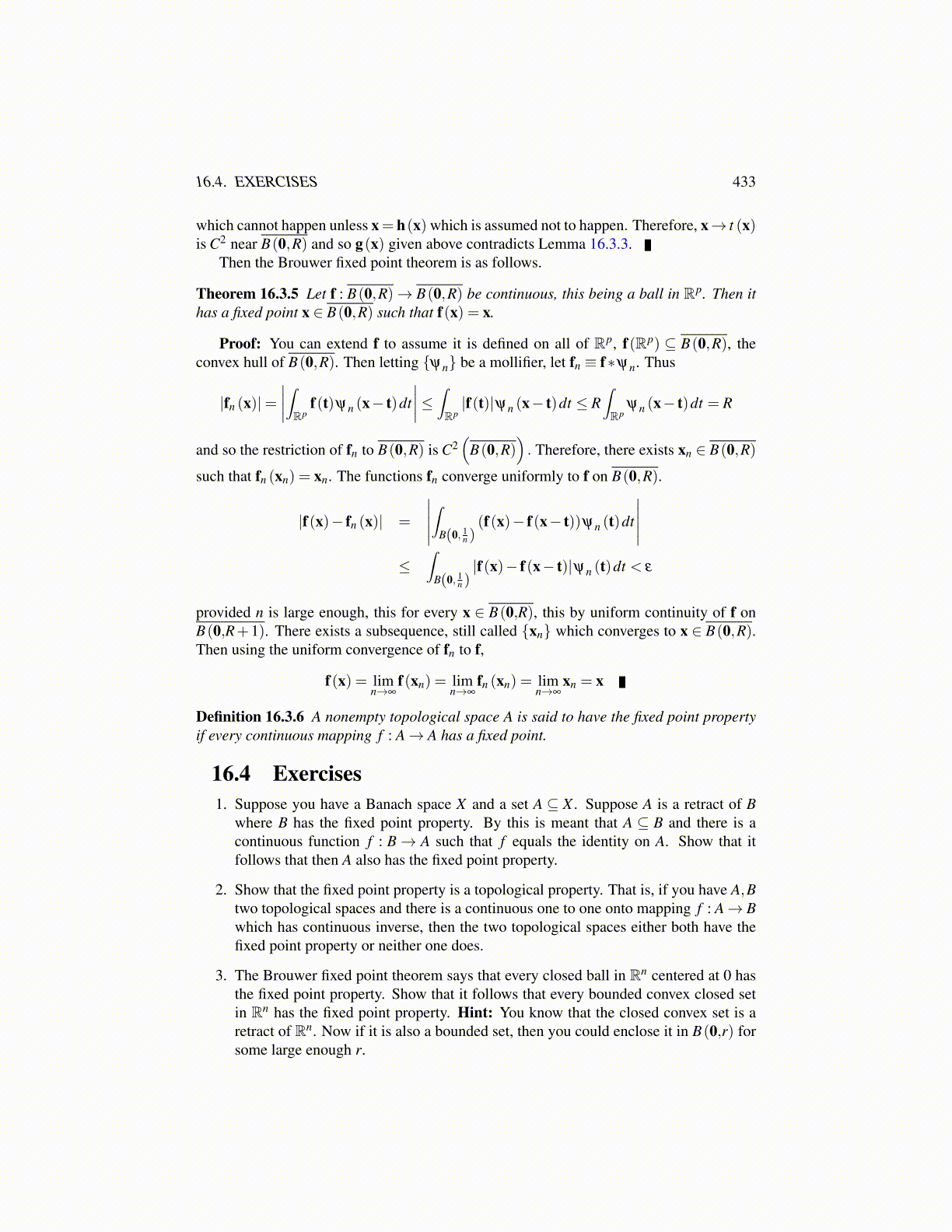
16.4. EXERCISES 433
which cannot happen unless x= h(x) which is assumed not to happen. Therefore, x→ t (x)is C2 near B(0,R) and so g(x) given above contradicts Lemma 16.3.3.
Then the Brouwer fixed point theorem is as follows.
Theorem 16.3.5 Let f : B(0,R)→ B(0,R) be continuous, this being a ball in Rp. Then ithas a fixed point x ∈ B(0,R) such that f(x) = x.
Proof: You can extend f to assume it is defined on all of Rp, f(Rp) ⊆ B(0,R), theconvex hull of B(0,R). Then letting {ψn} be a mollifier, let fn ≡ f∗ψn. Thus
|fn (x)|=∣∣∣∣∫Rp
f(t)ψn (x− t)dt∣∣∣∣≤ ∫Rp
|f(t)|ψn (x− t)dt ≤ R∫Rp
ψn (x− t)dt = R
and so the restriction of fn to B(0,R) is C2(
B(0,R)). Therefore, there exists xn ∈ B(0,R)
such that fn (xn) = xn. The functions fn converge uniformly to f on B(0,R).
|f(x)− fn (x)| =
∣∣∣∣∣∫
B(0, 1n )(f(x)− f(x− t))ψn (t)dt
∣∣∣∣∣≤
∫B(0, 1
n )|f(x)− f(x− t)|ψn (t)dt < ε
provided n is large enough, this for every x ∈ B(0,R), this by uniform continuity of f onB(0,R+1). There exists a subsequence, still called {xn} which converges to x ∈ B(0,R).Then using the uniform convergence of fn to f,
f(x) = limn→∞
f(xn) = limn→∞
fn (xn) = limn→∞
xn = x
Definition 16.3.6 A nonempty topological space A is said to have the fixed point propertyif every continuous mapping f : A→ A has a fixed point.
16.4 Exercises1. Suppose you have a Banach space X and a set A ⊆ X . Suppose A is a retract of B
where B has the fixed point property. By this is meant that A ⊆ B and there is acontinuous function f : B→ A such that f equals the identity on A. Show that itfollows that then A also has the fixed point property.
2. Show that the fixed point property is a topological property. That is, if you have A,Btwo topological spaces and there is a continuous one to one onto mapping f : A→ Bwhich has continuous inverse, then the two topological spaces either both have thefixed point property or neither one does.
3. The Brouwer fixed point theorem says that every closed ball in Rn centered at 0 hasthe fixed point property. Show that it follows that every bounded convex closed setin Rn has the fixed point property. Hint: You know that the closed convex set is aretract of Rn. Now if it is also a bounded set, then you could enclose it in B(0,r) forsome large enough r.